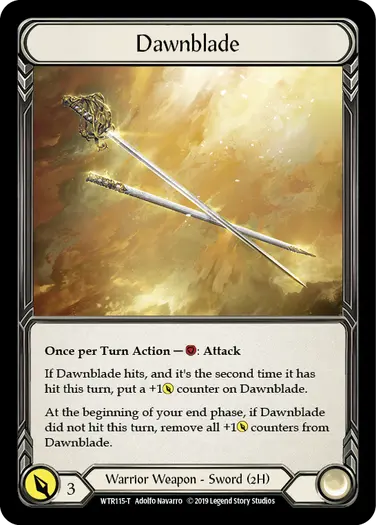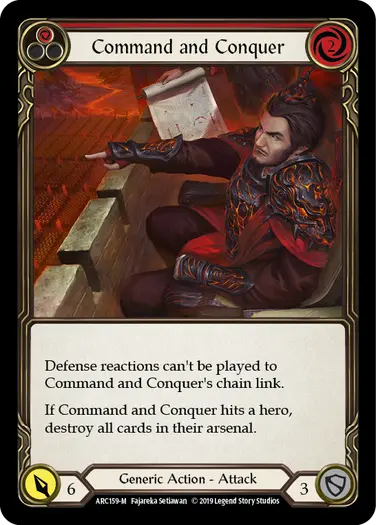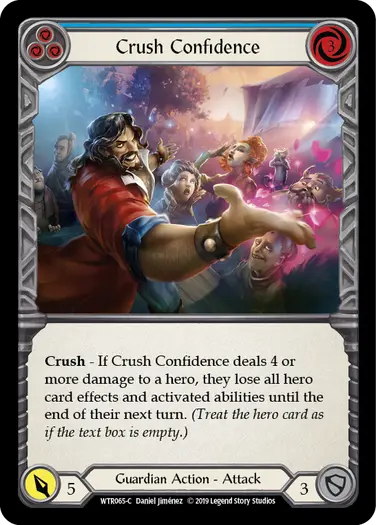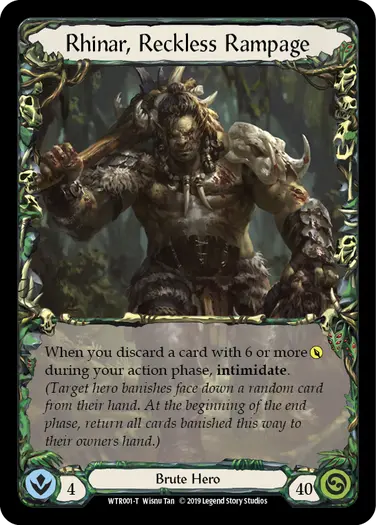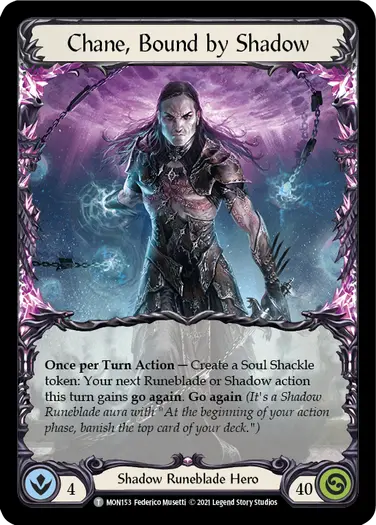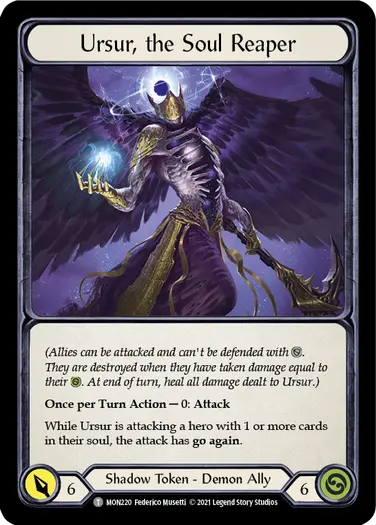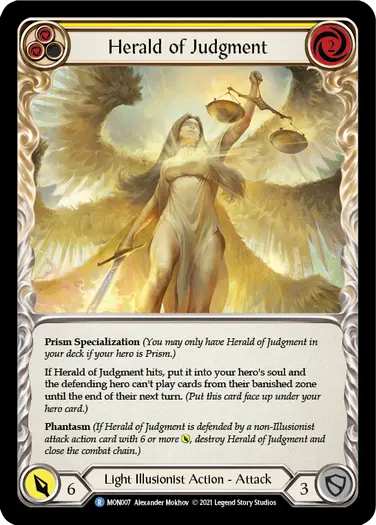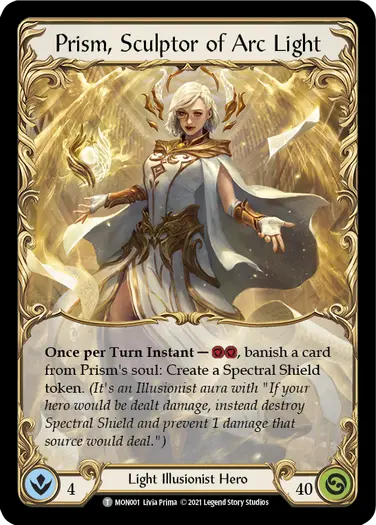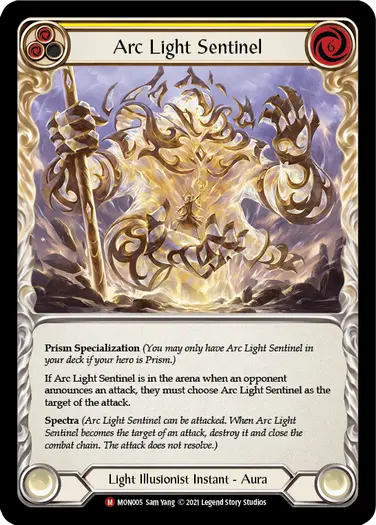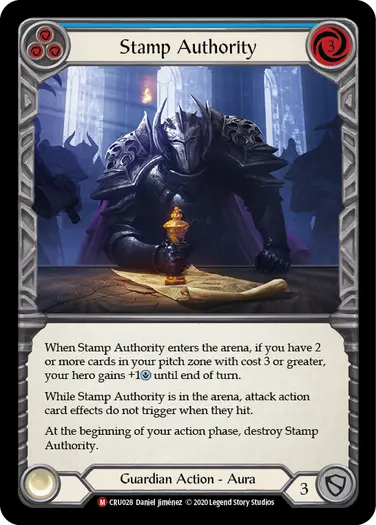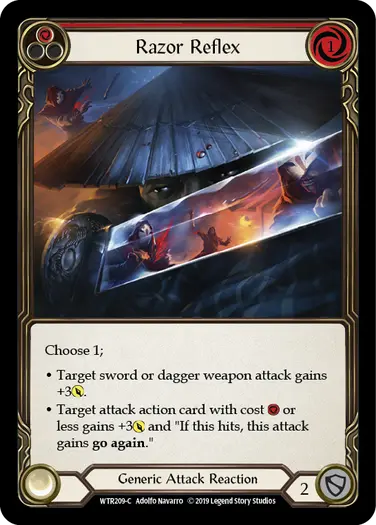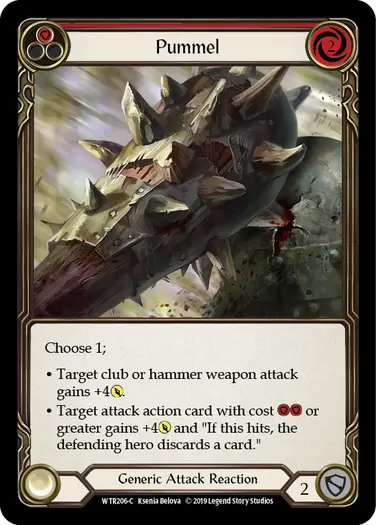Last week we had the privilege of hearing from Legend Story Studios’ Rules and Policy Manager, Josh Scott, as he cleared up a few commonly confused questions and situations that may come up in your upcoming Road to Nationals season. This week he’s back at it again, addressing topics such as ‘on-hit’ triggers, passing priority with an action point, Spectra and more! Rule the arena with razor sharp rules knowledge and reflexes this Road to Nationals season.
Please note that some questions in this Rules Reprise article might be outdated.
Always check the Comprehensive Rules, and Tournament Rules and Policy, for the most up-to-date rulings.
What happens if it’s your turn, you pass priority, and still have action points left over?
When the Turn player passes priority on an empty chain in the hopes that they end the turn, the opponent (now the active player) can still play/activate instants. If the opponent plays/activates an instant on an empty chain, the instant becomes layer 1 on the chain. When priority is passed back to the turn player, they can either play/activate instants in response, or they can pass priority, allowing the top layer to resolve. After a layer resolves, priority is passed back to the turn player. Because the Turn player has priority and the chain is empty, they can continue to play/activate actions or instants, even if they had passed on an empty chain earlier in the turn.
It is the first turn of the game. Tyler decides not to play anything, instead passing priority, hoping to end their turn and put a card in their arsenal. Perry (who is playing as Kano), activates Kano’s ability (layer 1) and passes priority. Tyler passes priority back, allowing the ability to resolve. Perry looks at the top card of their deck and announces that it will not be banished. Now that the layer has resolved, Tyler has priority and may play/activate actions or instants. This is because the chain is empty (actions must be played/activated as layer 1 of the chain) and they still have 1 action point remaining (required for playing/activating an action). The turn will only end once the chain is empty and both players pass in succession.
Tyler is playing as Dorinthea. Tyler plays and resolves Warrior’s Valor, and then attacks Perry with Dawnblade. Perry does not defend or prevent any damage, and Dawnblade hits. Tyler has 1 action point remaining and can attack again with Dawnblade, but decides to pass priority instead, in order to end the turn and arsenal the last card in their hand. Perry (as the active player) plays Sigil of Solace and passes. Tyler passes as well and Sigil of Solace resolves, gaining Perry life. Tyler regains priority and has the opportunity to attack with Dawnblade again, if they want to. This is because the chain is empty (actions must be played/activated as layer 1 of the chain) and they still have 1 action point remaining (required for playing/activating an action).
When do triggers have to be announced, before they are considered missed?
The latest point a triggered effect can be announced is at the point the triggered effect becomes relevant. If the player who controls the triggered ability does not acknowledge the triggered effect at or before that point in time, it is considered missed. The point at which the triggered effect must be announced is different for different triggered abilities, because their relevance to the game is dependent on the effect.
Perry has a card in their arsenal. Tyler attacks Perry with Command and Conquer. Perry does not defend and Command and Conquer hits. Because the triggered effect is relevant to the current game state (in that it destroys the defending hero’s arsenal on hit) it must be announced before the end of the chain link resolution step. In a practical sense, because Tyler has no more action points (and no instants to play), it would be before they signal to end their turn.
Perry is playing Rhinar. Tyler attacks Perry with Crush Confidence. Perry does not defend, Crush Confidence hits and deals 4+ damage. Because the Crush trigger is not relevant at this stage in the game, Tyler is not required to announce the triggered effect. Tyler ends their turn and Perry (on their turn) plays Wrecker Romp, discarding a 6 power card. At this point, Tyler is required to announce that the triggered effect from Crush Confidence is active and Perry’s Rhinar does not have any hero abilities (if they have not done so already). If Tyler has not announced the triggered effect before this point (when it is relevant) the trigger is considered missed.
I would like to make it clear that it is good practice to announce the triggered effects when they trigger/resolve rather than when they become relevant. It keeps the game honest, and helps prevent yourself from missing your own triggers.
Do effects that reference the defending hero still happen when attacking an Ally? Specifically, does Herald of Judgment hitting Ursur, the Soul Reaper prevent Chane from playing cards from the banished zone?
No. Effects can fail if their instructions are impossible or the subjects of the effects are invalid or do not exist. When attacking an ally, there is no “defending hero”. This is the reason why the controller of an Ally can not use cards to defend the Ally. Because there is no defending hero, any effect that references the defending hero for the current chain link will fail. In the case of Herald of Judgment, this is no exception.
Perry controls Usur, the Soul Reaper. Tyler attacks Ursur, the Soul Reaper with a Herald of Judgment. When Herald of Judgment hits, its ability triggers because it does not specify that it has to hit a hero, just that it “hits”. The triggered ability is put onto a layer of the chain and resolves. The first effect specifies to put Herald of Judgment into Tyler’s hero’s soul, which successfully resolves. The second effect specifies that “the defending hero can't play cards from their banished zone during their next action phase”, but because there is no defending hero (because Tyler is attacking an Ally), this effect fails and Perry may continue playing cards from their banished zone (if an effect permits it).
How does Go Again work when attacking Spectra?
Go Again is an ability on an object that gives the controller an action point when the object resolves. In the case of an attack, if the attack has Go Again the controller gains an action point at the end of the resolution step of combat. Spectra is an ability that triggers when the parent object (the object with Spectra) is the target of an attack, and when the triggered ability resolves, it closes the chain in the attack step of combat (4 steps before the resolution step). This means that if you attack an object with Spectra, you will not gain the action point from the Go Again ability on your attack.
Tyler has 1 action point, and Perry controls an Arc Light Sentinel. Tyler plays Ravenous Rabble targeting Perry’s Arc Light Sentinel. Spectra triggers and resolves, closing the combat chain during the attack step of combat. Tyler has priority, but has no action points remaining because the Go Again ability on Ravenous Rabble did not resolve.
How does Stamp Authority work?
Stamp Authority prevents abilities on an attack action card triggering from a “hit” during the damage calculation step of combat. A hit is defined as dealing damage during the calculation step. In summary, Stamp Authority prevents triggered abilities (on attack action cards) from triggering from the damage dealt during damage calculation.
This means if Stamp Authority is in play, and you deal 4 or more damage with an attack action card with Crush (during the damage calculation step), the Crush ability will not be triggered. Likewise for on-hit abilities granted by other cards, (like Razor Reflex or Pummel) these will also not trigger because they are now abilities on the attack action card itself.
Perry controls a Stamp Authority. Tyler attacks Perry with Crippling Crush. Perry does not defend or prevent any damage and the attack deals 11 damage. The Crush effect does not trigger because the damage was dealt during the damage calculation step, and the attack hit, therefore Stamp Authority prevents abilities from triggering from this event.
Perry controls a Stamp Authority. Tyler attacks Perry with Snatch. Tyler plays Razor Reflex targeting Snatch. Perry does not defend or prevent any damage and the attack hits. Snatch’s ability does not trigger, so Tyler does not draw a card. Likewise, the effect from Razor Reflex also does not trigger because the ability is granted to the Snatch card and therefore is treated as Snatch’s own ability. As such, Stamp Authority prevents both on-hit triggered abilities from triggering.
There are some more complex theoretical interactions with Stamp Authority and abilities like Crush, but these are not relevant with the current card pool, and thus the discussion will be left for a future article.
How does priority work?
I wanted to revisit this one briefly so that players can understand a little more about it without being confused about some of the technical diagrams I’ve produced in the past.
Formally, priority follows 3 simple rules, which can be matched up to the state diagram:
- The active player (the player who has priority) can play/activate cards/abilities (1a) (which are put as the top layer of the chain) until they pass priority to the next player (1b).
- When all players pass priority without playing/activating any cards/abilities (2a), the top layer of the chain resolves (2b).
- When all players pass priority without playing/activating any cards/abilities (2a), and there are no more layers to resolve, the phase/step ends (3b).
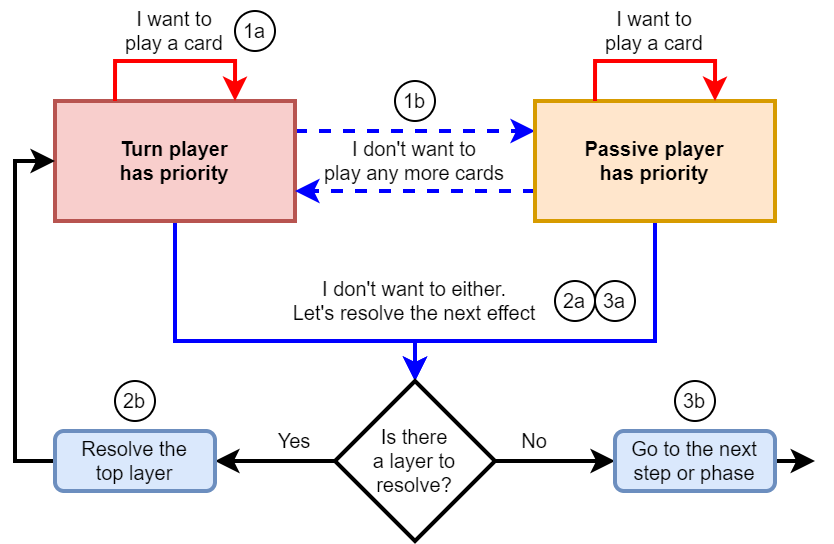
The simplified visualization (inspired by a dear friend of mine) shows that priority is just a formal method of playing the cards (and abilities) you want to play, before giving the opponent the chance to play the cards (and abilities) that they want to play. If neither of you want to play any more cards right now, the top layer resolves, and the turn player can go back to playing cards. This repeats until both players do not have any more cards they want to play, and there’s nothing left to resolve, so you move onto the next phase (action phase -> end phase), or the next step of combat.
With Road to Nationals kicking off in a few days, this rules refresher should help you get your priorities straight and aid you in battle on your road to becoming a champion! Josh will be back in future to address some more quick questions.

